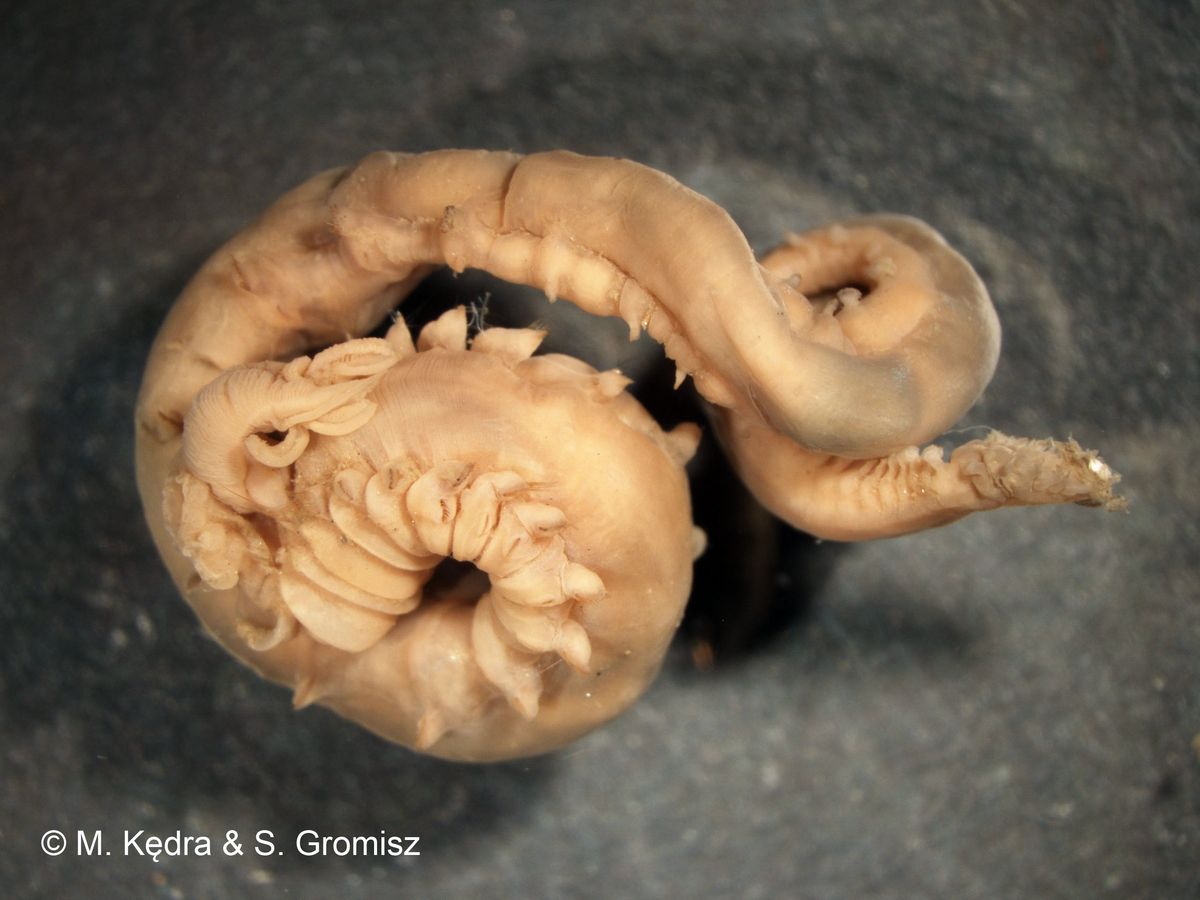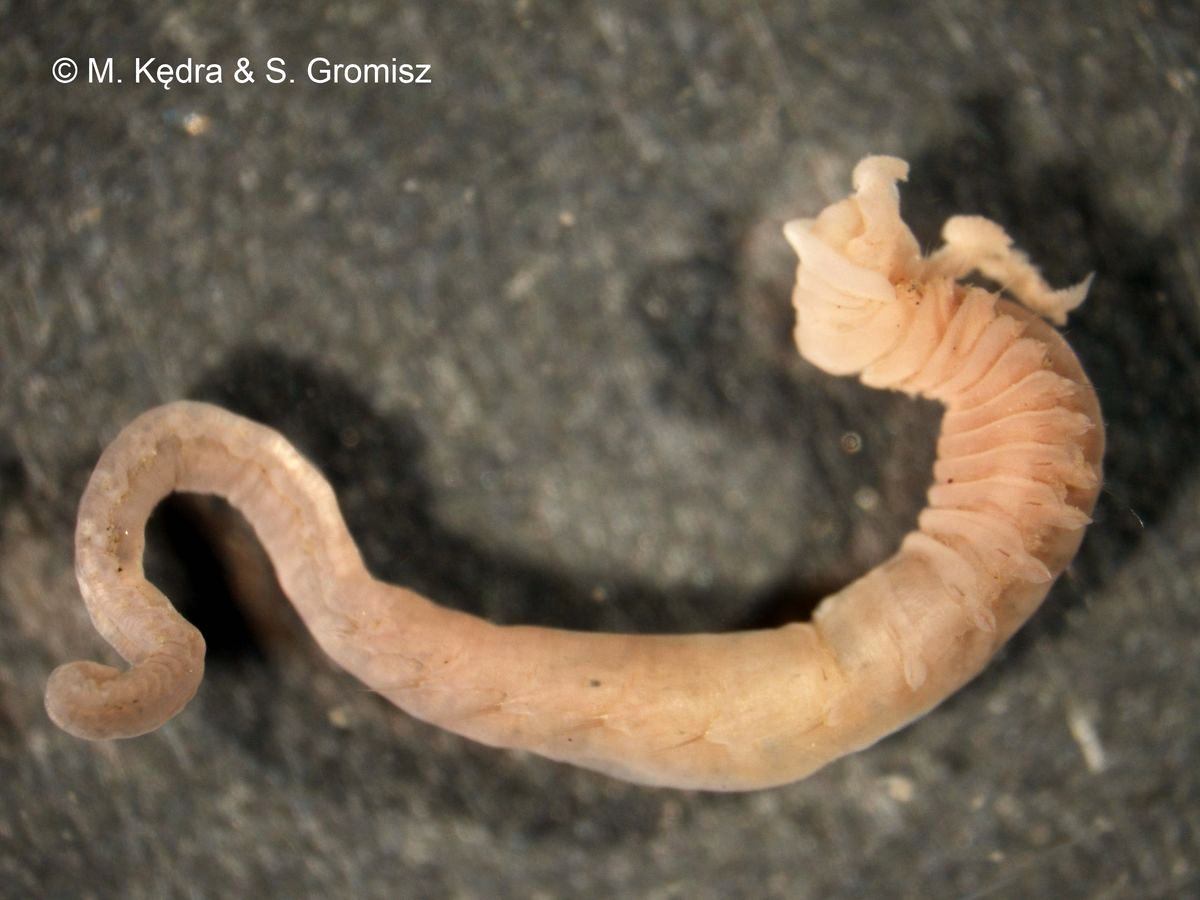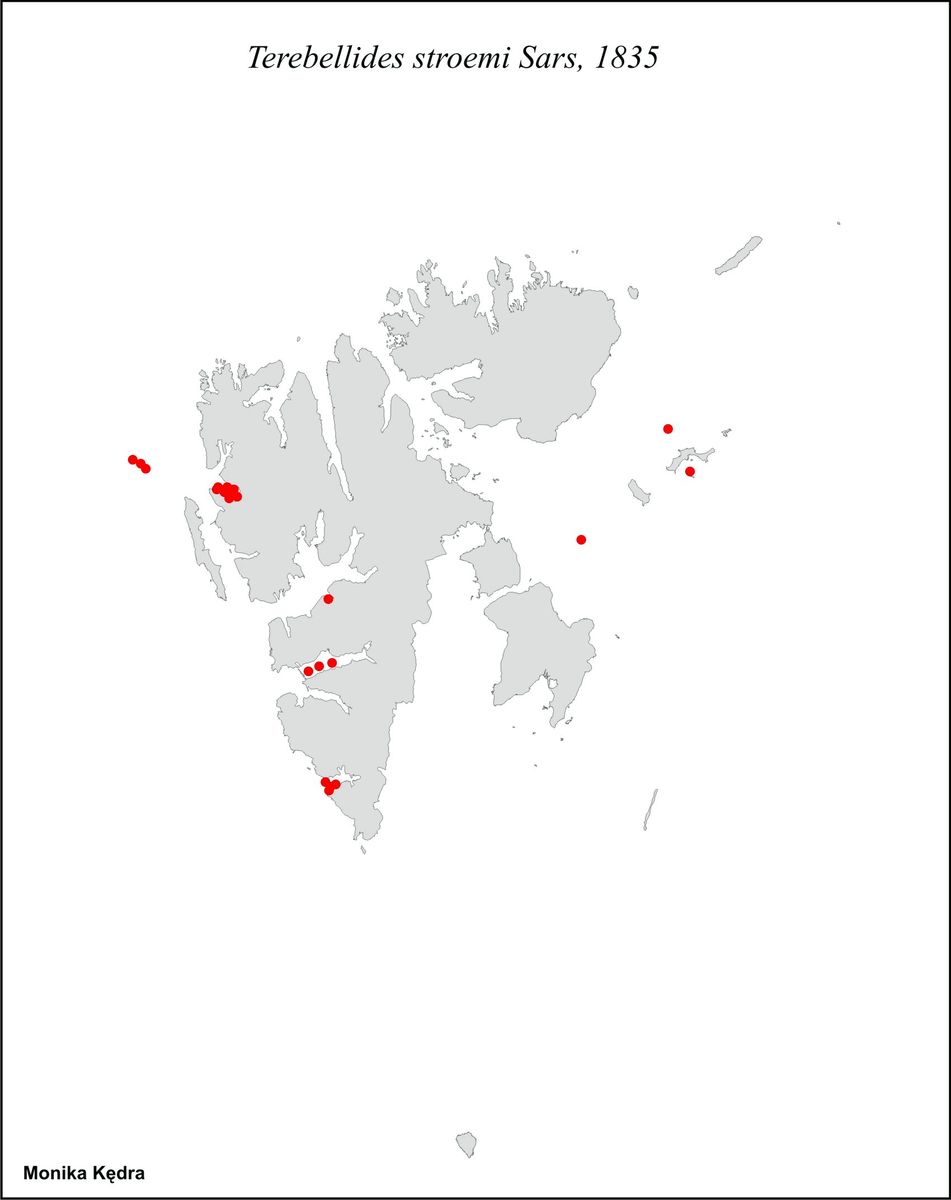Terebellides stroemi Sars, 1835

|

|

|
Terebellides stroemii Sars, 1853
Terebellides gracilis Malm, 1874
Distinguishing characteristics
Body bent in S-shape.
One large quadripartite branchia with transverse lamellae on segment 3.
Species description
Body relatively short, tapering towards pygidium, often characteristically bent in S-shape. Tentacles numerous, short, grooved. Segments 1 and 2 ventrally forming a front at an angle to thorax. Single, short branchial stem arising middorsally on segment 3 and bearing four branches with large transverse lamellae. Upper two branches distinctly larger than the lower ones. 18 thoracic chaetigers. Notopodial chaetae starting at segment 3. Uncinigerous tori starting at segment 8. Uncini of segment 8 distally bent spines, widely projecting from the neuropodium. Uncini of the rest of thorax with long shafts. Pygidium with crenulate edge. Tube – transitory, very thin layer of secretion incrusted with mud or sand.
Size
Up to 75 mm for 60 segments.
Color
Alive: pink or orange, branchial lamellae red, tentacles brownish. In alcohol yellowish, faintly iridescent.
Habitat
On sediments ranging from pure mud to clay or fine sand, including all forms of mixed bottoms. Most abundant on muddy bottoms. Eulittoral to a depth of about 3000 m. Species very sensitive to organic enrichment and present under unpolluted conditions
Mobility
Sedentary.
Feeding
Surface deposit feeder.
Life cycle
Encapsulation of embryos in a gelatinous mass with direct development.
Distribution
Arctic, North Atlantic to Mediterranean, Black Sea, North Sea to the Baltic.

